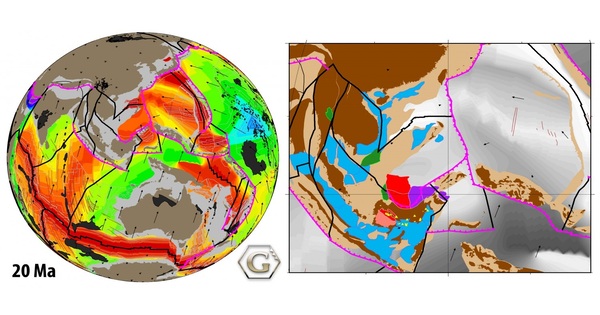Tectonophysics, a branch of geophysics, is the study of the physical processes that cause tectonic deformation. This includes measuring or calculating stress and strain fields on the Earth’s surface, as well as rheologies in the crust, mantle, lithosphere, and asthenosphere.
Tectonophysics is the study of the forces and processes that cause the development and deformation of the Earth’s crust and lithosphere using principles from geology, physics, and mathematics. Researchers in this field explore the structure and dynamics of the Earth’s interior as well as its tectonic evolution over time using a variety of techniques such as seismology, geodesy, remote sensing, laboratory experiments, and numerical modeling.
Overview
Tectonophysics is concerned with motions and deformations in the Earth’s crust at scales ranging from meters to thousands of kilometers. These govern processes on local and regional scales, as well as at structural boundaries, such as the destruction of continental crust (e.g., gravitational instability) and oceanic crust (e.g., subduction), convection in the Earth’s mantle (melt availability), the course of continental drift, and second-order plate tectonics effects such as lithosphere thermal contraction.
This includes measuring a hierarchy of strains in rocks and plates, as well as deformation rates; researching laboratory analogues of natural systems; and developing models for the history of deformation.
Some key topics within tectonophysics include:
- Plate tectonics: The theory that describes the movement of the Earth’s lithosphere in discrete plates and the interactions between these plates at plate boundaries.
- Structural geology: The study of the deformation of rocks and the processes that lead to the formation of geological structures such as folds, faults, and fractures.
- Seismology: The study of earthquakes and seismic waves to understand the internal structure of the Earth and the mechanisms of seismic activity.
- Geodynamics: The study of the processes that drive plate motion, including mantle convection, gravitational forces, and the rheology (flow properties) of Earth materials.
- Geodesy: The measurement of the Earth’s shape, gravitational field, and crustal movements to study tectonic processes and monitor crustal deformation.
Overall, tectonophysics is critical for understanding the Earth’s dynamic behavior and the processes that shape its surface and interior. This information is critical for a variety of applications, including natural hazard assessment, resource exploration, and understanding the evolution of the Earth’s crust and lithosphere over geological time scales.
















